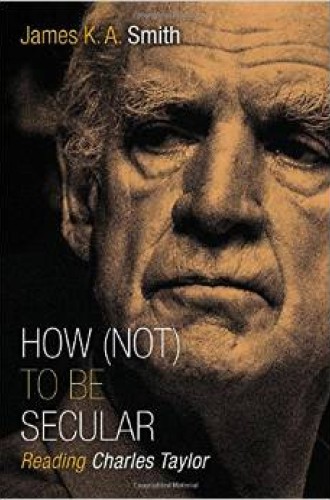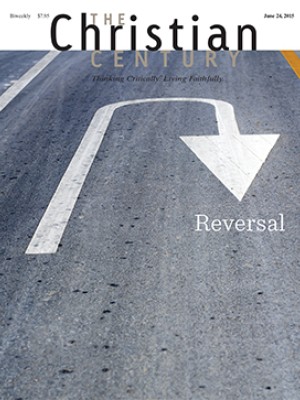How (Not) to Be Secular, by James K. A. Smith
Charles Taylor’s A Secular Age is one of the most important books of the new millennium. It offers a rich description of what it is like to live in a world that is both thoroughly immanent and haunted by transcendence. A Secular Age offers new vocabulary for understanding individual experiences and social patterns, along with a genealogy that accounts for the forms of these phenomena. Taylor’s book can make readers feel as if they now see a third dimension to a world they used to inhabit as if it were flat. He does not simply join debates about things like the relationship between church and state, the nature of the atonement, or the elements of worship. Instead he tells a story that explains how our debates have come to assume the forms they have and why some arguments feel more plausible than others.
Taylor’s book is important for academics. Published in 2007, it has already generated a small industry in scholarly commentary. And it may be even more important for church leaders trying to make sense of faith in this secular age.
But the importance of A Secular Age is matched by its inaccessibility. It is a great woolly mammoth of a book. Almost 900 pages long, it is full of repetitions and digressions. Taylor presents a coherent vision, but not by developing a single line of argument that can propel a reader along. Instead he initiates many shorter arguments that sometimes overlap with one another. He meanders and explores and doubles back. And the book abounds with references that will be understood only by people whose reading in philosophy, theology, sociology, and literature is as wide as Taylor’s own. Features like these make A Secular Age more admired than read, the kind of book that collects dust on the shelf except when it is being used to prop open a door.
Read our latest issue or browse back issues.
How (Not) to Be Secular, James K. A. Smith’s wonderful new “field guide” to Taylor’s book, gives readers many good reasons to put A Secular Age back on their desks. Smith, a philosophy professor at Calvin College, has written a string of smart books that explain the significance of contemporary social and literary theory for Christian life and ministry. How (Not) to Be Secular may be the best of these books, in part because A Secular Age says so much that matters for the practice of faith.
Smith’s book does great work in opening Taylor’s tome to a wider readership. His commentary is clear, accurate, and insightful. It is also concise, leading readers deep into Taylor’s ideas in well under 200 pages. Smith’s sure grasp of Taylor’s big picture makes the details of the argument pop with fresh intelligibility. The correspondence between the chapters in Smith’s book and the sections in Taylor’s makes it easy to tack back and forth between the two volumes.
Smith further encourages this movement by focusing on the vocabulary of Taylor’s argument. Key phrases appear in boldface type to mark their significance, and a glossary defines them. This strategy works so well because Taylor’s distinctive phrases carry so much of his argument. A reader who understands what Taylor means by phrases like the buffered self will grasp the most important ideas in the larger book.
Like Taylor, Smith relies extensively on examples. Smith’s choice of references—less Rousseau, more Radiohead—helps make Taylor’s vision clear for readers who know pop culture better than they know philosophy or literature. Because pop culture is one of the spheres in which the secularity Taylor describes registers most distinctly, Smith’s references are not just a bunch of hip accessories that make Taylor seem relevant to more and younger readers. They are meaningful extensions of Taylor’s argument.
Smith consistently and explicitly connects Taylor’s analysis to questions that arise—or should arise—in the course of ministries of many kinds. How should we understand the widespread shift in emphasis from eternal destiny to social justice? How might we imagine a renewed sacramentalism in Protestant worship? What shape could Christian apologetics take in a secular age?
Smith’s book would have benefited from greater attention to some of the most important criticisms of Taylor’s account. And I longed for more engagement with Taylor’s discussion of Ivan Illich, which I read as one of his sharpest challenges to the institutions and ideologies that prevail among American Protestants. But it is not quite fair to ask for more. Everything that Smith does in his book is worth doing, and he is wise to keep his commentary brief and focused.
Rather than trying to replace Taylor’s larger book with his own smaller one, Smith encourages readers to make the journey back to “the mother ship that is Taylor’s big book.” Smith cites Colin Jager on Taylor’s “romantic” method, which depends on telling a story. As Jager writes, “One cannot simply extract the analytic content from the story; the story has to be told, experienced, undergone, in order for its force to be felt.” The form of Taylor’s book—however frustrating it might be at first—is a crucial part of its argument. It must be experienced to be understood.
It matters that Taylor chose not to develop a single, propulsive line of argument, for he does not think such arguments fit the background assumptions of our time. Instead he creates an ambient environment that gives up its goods only with patience and rereading. He presents historical narratives that are never less than empirical, even as they are always open to more. He crafts portraits that are haunted by hagiography. A summary of the content of a book like Taylor’s would lose so much in translation that it would falsify itself. What we need is not a summary but a guide. And Smith has written the best guide I know.







